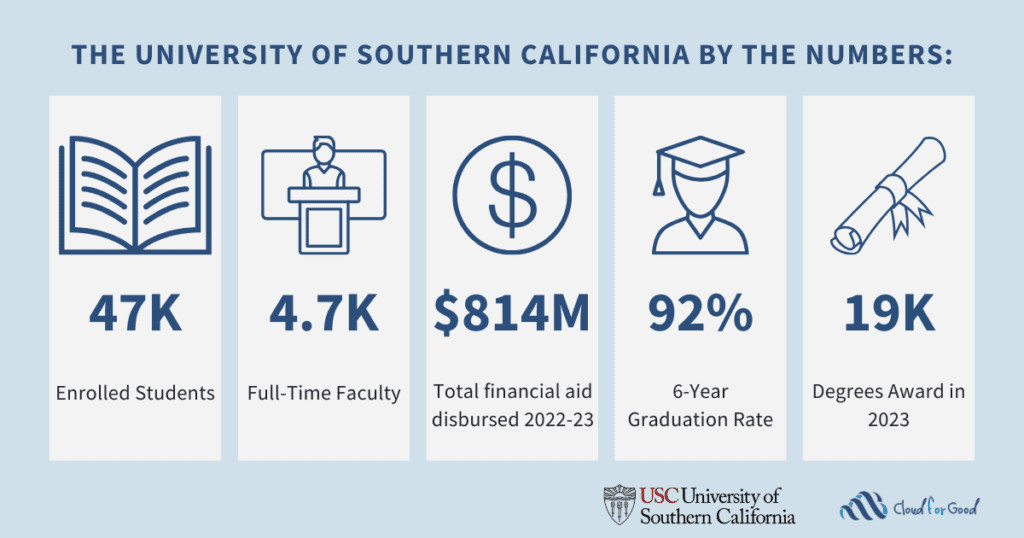You know you’ve struck gold when your customers sell for you. People aren’t only signing up and renewing but also telling their friends about your product or service. It’s a dream come true — a product-market fit (PMF). You’ve created a product or service that addresses your target audience’s pain points. Now these satisfied customers understand how valuable you are to their business success. They’re spreading the word about their experience, and new prospects are lining up.
To make this dream scenario a reality, strengthen your grasp of product-market fit by learning how to achieve it and how it can help grow your business.
What is product-market fit?
Product-market fit is when your product or service solves a universal and unmet challenge within the marketplace. Your target audience consistently buys your product, sales performance is booming, revenue is growing, and customer churn is low because they stay loyal year after year. People find such value in your product or service that they become brand ambassadors, selling your product to others in their network.
In short, you have a large total addressable market (TAM). You’ve successfully addressed your customers’ pain points or service gaps by securing alignment with your buyer personas. Now, you can use this roadmap to scale your business to reach more ideal customers.
Onboard fast, sell faster
See how Sales Cloud speeds up the sales cycle with data and AI, making you more efficient at every step.



Why is product-market fit important?
Product-market fit is an essential element that guides your core business strategies, including sales and marketing strategies, product development, market penetration, and pricing. A company without product-market fit is misaligned with its target audience’s needs, which can lead to poor customer engagement, high churn rates, and weak financial growth. When you have product-market fit, you can see your business thrive by formulating strategies that:
- Help sell your product: Product-market fit helps you with solution selling. Your sellers understand how your product or service solves customer pain points.
- Better position your product: Product-market fit is about being specific and intentional with your target customer. Just because your product has many features doesn’t mean it’s the right fit for every industry. If you don’t find your product-market fit, you risk losing time and budget on a go-to-market strategy that doesn’t pay off.
- Improve customer loyalty: Returning customers spend 67% more than new customers because they know that what you’re offering works. This not only benefits your bottom line, but it also helps you optimize your products. The more people who use your product, the better you can understand which features are valuable and what areas need improvement.
- Grow your business: Happy customers are returning customers. These users will also share your product with associates, organically expanding your product reach with word-of-mouth advertising.
Think of your product as a giant toolbox: You fill it with screwdrivers, hammers, saws, and nails. Then you target anyone in the construction and maintenance field. But is a screwdriver going to help a plumber when they need a wrench? Achieving product-market fit is about understanding what makes your target audience tick. Once you learn that, you can start reaping the benefits.
Benefits of achieving product-market fit
Every business wants to achieve product-market fit because it’s a sign of a healthy, viable business, especially for startups. It indicates that your product or service was designed to address the needs of its target market. Cementing your product-market fit ensures you’re well-positioned for success.
These are a few of the perks of achieving product-market fit:
- Finding right-fit prospects: Product-market fit helps you get your product or service in front of the right prospects. According to the State of the Connected Customer, 86% of business buyers are more likely to buy if companies understand their goals. This strategic focus on selling increases the odds of closing deals and adding to the bottom line. You can then direct your efforts toward monitoring sales team productivity and strengthening any weak points in your sales tactics.
- Sustainable growth: Finding your product-market fit can help recover some of the early costs spent on marketing, research and development, and pipeline growth. You’ll make better use of future resources, which improves the sustainability of your business. You understand who your customers are and how to target your marketing efforts, and you can create demand for your product. Once you have a solid foundation, you’ll better understand how the product delivers solutions.
- Market advantage: With increased product demand, you can start scaling your business operations and boosting profits. This can also lead to more investment opportunities. Investors want a stable company that remains consistent. With additional funds, your business can focus on long-term growth opportunities instead of just responding to short-term obstacles.
How do you measure product-market fit?
Product-market fit requires measuring qualitative and quantitative audience data that confirms a significant portion of the marketplace needs your solution. Here are some ways you know you’re satisfying the market:
- Interviews: You can discover what your target audience feels is a necessary feature of your solution, how much they’re willing to pay, and how willing or reluctant they are to handle organizational change to implement your solution.
- Customer count: A new entry into the marketplace could be popular initially but may fade over time. You need to find out whether your customer count is sustainable. If they stop after a year or two, this could indicate a poor product-market fit.
- Use cases: This refers to how customers use your product to solve problems. A wide range of use cases demonstrates the product’s value to different customer needs within the target market. This strengthens the product’s value proposition because it benefits multiple audiences.
- Multiple verticals: If a product is adaptable and sold across various industries (verticals), it suggests a broad market need and potentially strong product-market fit.
- Price stabilization: A stable price point suggests customers perceive the product’s value to be consistent with its cost. Frequent price drops or difficulty maintaining a desired price point indicate customers’ resistance to the pricing strategy. That could mean a potential mismatch between perceived value and actual cost.
Analyze what the data is telling you. You might find it useful to revisit your initial product launch strategy. New features may be needed, or existing features may need enhancement. It’s also possible that you are emphasizing the wrong capability — one that doesn’t truly set you apart from competitors. Keep trying new value propositions and refining production designs until you find the right fit.
When do you have product-market fit?
Certain methods can tell you if you have product-market fit. I’ve found that you need to have at least 100 paying customers at fair-market value. Aim to get at least 10 publishable case studies from these customers. Also, a churn rate of 5%-7% is considered a good indicator.
Of course, nothing beats rave reviews of your product or service. It’s best to stay connected with your customers and ask for feedback as much as possible. A sales engagement platform can help you stay connected to your customers across all your channels. Finally, if people are demanding your product or service so much that your supplies can’t keep pace, then you’ve definitely found your product-market fit.
It will likely take two or three years to find a true product-market fit. This is because you need to know how many of your customers will renew. If you’re an organization with annual contracts, you generally need your customers to stay for at least three years to be truly profitable with strong growth potential.
This is the end goal. So, let’s get you started.
How do you achieve product-market fit?
Achieving product-market fit means aligning with your target audience’s challenges. You need to place your customer at the center of your strategy. Let’s begin by understanding your customer’s perspective.
- Identify a problem to be solved in your industry. You can do this by asking what’s stopping your target audience from reaching their goals.
- Address the obstacle directly and tout your solution. Show why your product or service is indispensable to your target audience. This is also called developing your minimum viable product (MVP). Your MVP demonstrates your value proposition, which highlights the pain a customer feels without a solution, and includes a description of the positive outcomes from using your product.
- Test your product market validation. By this stage, you have a first version or draft of your MVP (often called an “alpha” model) ready to launch. Offer a demo to a few potential customers so they can engage with and use it. Collect feedback from their experiences to gain real-world validation.
- Improve and develop a second version. This “beta” model of your product or service should be guided by the feedback you received on the launch, such as new features or expanded capabilities.
- Test again and gain traction in the marketplace. For beta testing, you’ll usually need 20–30 paying customers. These should be different testers from your alpha group so they can experience the product or service fresh. Begin slowly and then encourage greater adoption. You can start to confirm your ideal customer profile as you gain more paying customers after demos and free trials.
- Keep testing. Suppose you’ve reached this point and still maintain a low churn rate of customers. In that case, you might feel the urge to congratulate yourself on achieving product-market fit, but continue strengthening your relationship with the marketplace. Your value proposition may still feel true, but customer expectations evolve. Keep your product or service top of mind with your target audience by soliciting their feedback for future upgrades. Software like Revenue Cloud streamlines the quote-to-cash process.
You’re growing your customer base because you built a product or service that your target audience finds useful. Your prospects now become customers.
Product-market fit questions to ask
Interviews are just one of the tools you can use to gauge your product-market fit. Asking your target audience specific questions can help you better understand your customers’ challenges. You can structure your surveys using multiple-choice or open-ended questions.
- Multiple-choice questions: Multiple-choice questions are great for understanding your target audience’s demographics, geographies, occupations, and industries. Ask about company size, company revenue, and the end users who’d want this service.
- Open-ended questions: Open-ended questions allow your target audience to share their opinions in detail, helping you understand how customers will use your product. Ask about how long it takes end users to complete a certain task, what would help them work more efficiently, or how important solving this challenge is.
The responses reveal what matters most to potential customers. After all, the last thing you want to create is something no one needs. Below are a few examples of businesses that did the research and found their product-market fit.
Drive pipe faster with a single source of truth
Discover how Sales Cloud uses data and AI to help you manage your pipeline, build relationships, and close deals fast.



Examples of product-market fit
Here are a couple of examples of product-market fit to consider. Remember, each industry’s target audience pain points will differ. However, the process of finding product-market fit remains the same.
A smooth solution to shaving
Some men prefer a shaven face, while others diligently maintain their beards. In any case, buying razor blades in stores can get expensive, especially when you need fresh razors weekly for a safe, clean cut. Let’s not forget the inconvenience of traveling to and from the store to search for your ideal razor.
An online consumer packaged goods business decided to tap into the pain points felt by millennial men and other folks tired of expensive and over-hyped razors. They deliver high-quality razor blades directly to subscribers’ doorsteps at a fraction of the cost of traditional brands. They offer a subscription model to promote consistent affordability and customer retention. Their direct-to-consumer shipping cuts out the middlemen, lowering prices and increasing convenience.
Seamless payment solution
You’re out to dinner with friends, and the check arrives. You want a convenient and safe way to split the check or pay back your friends that will deposit the cash right into their bank accounts.
A new fintech startup develops a hypothesis that tech-savvy millennials and Gen Z consumers are comfortable with mobile technology. They’d enjoy a simple way to send and receive payments. The company creates a social payment app that lets users easily send and receive money with friends and contacts. The app is intuitive with a great user experience.
These companies completed the steps and achieved their product-market fit. But that doesn’t mean they stopped working on their strategy.
What to do after you achieve product-market fit
When you know what’s working, make it repeatable and scalable as you prepare to grow. Look to the future, not only for your business, but also for what your audience will need. You might be able to anticipate their challenges by doing the following:
- Invest in infrastructure, customer support, and processes to handle an influx of new customers without compromising quality or service. Build up resources for research and development. This allows you to explore new features and business models that can fuel future growth and potentially disrupt the market, like sales software and sales analytics software.
- Increase customer engagement by regularly collecting customer feedback. As your audience base grows, consider segmenting your user base by demographics, needs, and usage patterns. This allows you to tailor your messaging, features, and support. The more personalization you can add, the more customer loyalty will grow.
- Develop strategies such as loyalty programs, exclusive offers, and top-notch customer service to keep users engaged and prevent churn.
- Expand into new markets or user segments. At this point, you should be an expert in three or four verticals with your current customers. Explore opportunities for product line extensions or complementary offerings that cater to a broader range of customer needs.
- Implement sales automation software to help you close deals faster and improve pipeline growth.
- Embrace AI for sales. AI will continue to have a significant impact on how products address customer needs. As you make enhancements to your products, consider how AI can enhance your solution.
Relationships take time and trust. They are not just a set-it-and-forget-it concept. Build on the relationships you created, and your audience will grow with your business.
Find success with your product-market fit
Product-market fit is crucial to the success of any startup or new product launch. It involves recognizing a challenge in the marketplace and developing a product or service that delivers a solution. You can find your product-market fit by placing your customers at the center of your strategy, conducting marketplace research, and inviting continual feedback. When a product works — and works well — you’ll retain your current customers. And those customers will become your best sellers.





